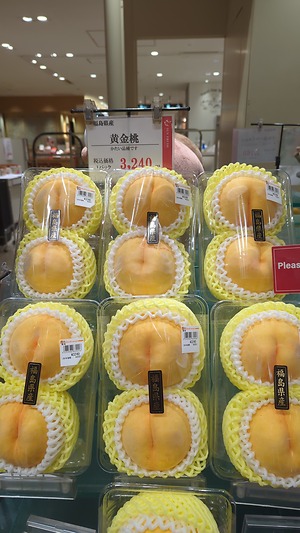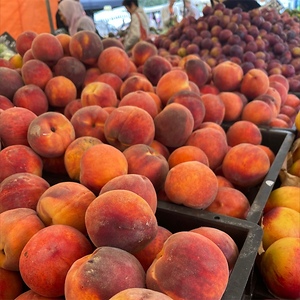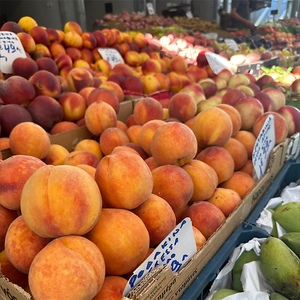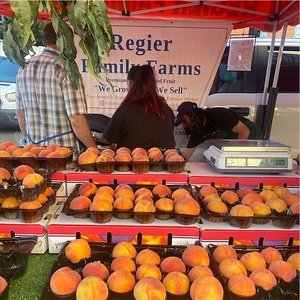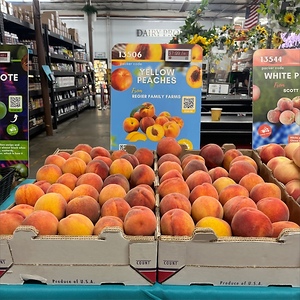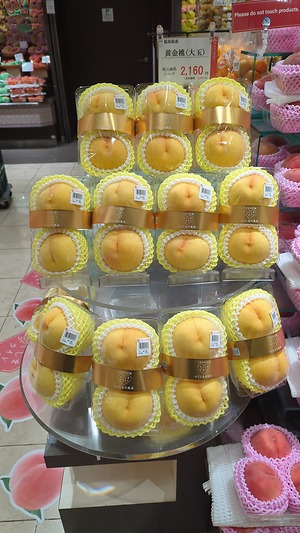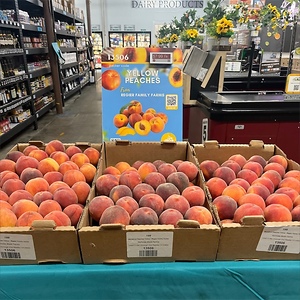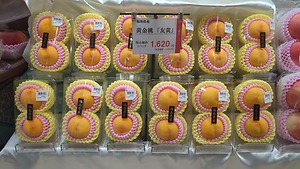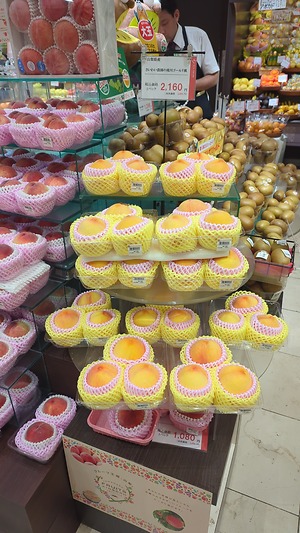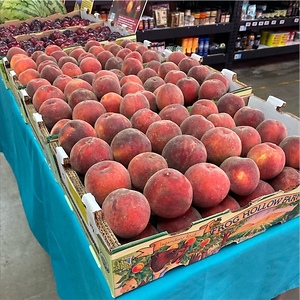


Yellow Peaches
Estimated Inventory, cs : 0
This item was last sold on : 09/26/24
Description/Taste
Yellow peaches are round, fuzzy fruits that grow on trees and come in many varieties. They normally measure about 6 to 7 centimeters in diameter though their size depends on the type of Yellow peach. They are mostly round, with a slight crease running from the bottom to the top of each fruit. Yellow peaches have a thin, fuzzy skin that’s easily bitten into. The skin displays a gradient of red, pink, and golden hues. The flesh of Yellow peaches has a succulent, juicy texture and a thick, slightly fibrous pulp that is easily bitten into. In the center of the flesh is a red peach pit that’s shriveled and hard, taking up only a small portion of the fruit. Yellow peaches have a sweet aroma that grows more fragrant when ripe. Their flavor is sweet, tangy, and slightly acidic.
Seasons/Availability
In the Northern Hemisphere, Yellow peaches are available from May to September. In the Southern Hemisphere, they are available from October to April.
Current Facts
The botanical name for Yellow peaches is Prunus persica and they belong to the Rosaceae family, which also includes apples, cherries, pears, raspberries, and strawberries. There are over 2,000 varieties of peaches worldwide. Yellow peaches are often compared to white peaches but there are a few differences between these varieties. Yellow peaches have red or blush pink skin while White peaches have pale pink skin. Yellow peaches tend to be more acidic with a more delicate and floral sweetness while White peach's taste tends to be more saturated. White peaches are usually softer and more easily bruised than Yellow peaches. There are many varieties of Yellow peaches including Richie May, Queenscrest, Spring Flame, Sunbrite, Early Star, Ruby Prince, and Red Haven. Yellow peaches can be categorized into clingstone, freestone, or semi-clingstone varieties. Clingstone peaches are often picked in the early season and have a firm, fibrous texture that sticks to the pit. Freestone peaches have flesh that's easily separated from their pit, making them more conducive to fresh eating. Semi-clingstone peaches combine the sweetness of clingstone with the ease of eating a freestone.
Nutritional Value
Regardless of what color or type of peach they are, all peaches have roughly the same nutritional value. Yellow peaches contain more beta-carotene than White peaches, which is what gives them their bright color. The beta-carotene in peaches, along with lycopene, can help protect the body from free radicals and may reduce the risk of cancer and heart disease. Lycopene gives Yellow peaches’ skin its pink-red hue and can help reduce inflammation. Peaches are a good source of vitamins A and C, nutrients that help the immune system fight off infections, encourage iron absorption, and improve eye and skin health. Peaches contain fiber, potassium, magnesium, and phosphorus, which may aid digestion, heart rate regulation, blood pressure, energy metabolism, muscle, nerve, and kidney function, and mental, heart, and bone health. Peaches are a source of iron and zinc, which can help with oxygen transportation, preventing fatigue, cognitive function, wound healing, and treating skin conditions like acne.
Applications
Yellow peaches are often eaten fresh but can also be grilled, roasted, stewed, canned, or baked. The skin and flesh of the fruit are edible but the pit should be removed. Raw Yellow peaches can be eaten out of hand, cut into slices, or used in salads, salsas, smoothies, juices, cocktails, or fruit salads. Yellow peaches can be halved, brushed with oil, and grilled over charcoal to give them a caramelized taste. They can be roasted in the oven and served on cheese boards, warm salads, or ice cream. Overripe or bruised Yellow peaches can be stewed in a saucepan with lemon juice and sugar and then used as a topping for vanilla yogurt. They can used in baked goods like pies, cobblers, tarts, or crisps. Yellow peaches can be made into jams, preserves, and fruity sauces. They pair well with fruits like strawberries, mangoes, blueberries, bananas, nectarines, pears, cherries, oranges, and limes. Yellow peaches can be used in recipes with tomatoes, onions, cilantro, spinach, cheeses like mascarpone, mozzarella, and goat cheese, as well as almonds, walnuts, pumpkin seeds, cinnamon, brown sugar, and balsamic vinegar. Yellow peaches should be stored at room temperature until ripe. Then they should be refrigerated or frozen to preserve.
Ethnic/Cultural Info
Peaches were first domesticated along the Yangzi River in China around 6000 BC. They became a symbol of vitality, longevity, immortality, and protection against evil in Chinese culture. There, they are often given to the elderly on birthdays. China remains the largest producer of peaches internationally, yielding 11 million tons each year which includes a large amount of canned Yellow peaches. The botanical name Prunus persica is a reference to when the Persians introduced peaches to the Roman empire. Alexander the Great helped bring peaches to Europe and the Spanish explorers then transported them to South America during the 1500s. Peaches came to North America in the early 1600s when English colonist George Minifie planted the first peach tree in Virginia. By the mid-1800s, peaches became commercially available in the United States.
Geography/History
Peaches are native to China and grow in temperate regions throughout the world. They need wet winters and hot, dry summers to survive. Yellow peaches are a result of selective breeding and are thus not found in the wild like White peaches are. Yellow peaches are grown commercially or found in orchards and home gardens. After they were discovered in ancient China, peaches were brought along the Silk Road to modern-day Iran and then spread to Europe, South America, and North America from there. The first peaches found in China were most likely white, with the yellow version developing much later. Yellow peaches are a very popular fruit that can be found in grocery stores, farmers' markets, and gardens all over the world.



